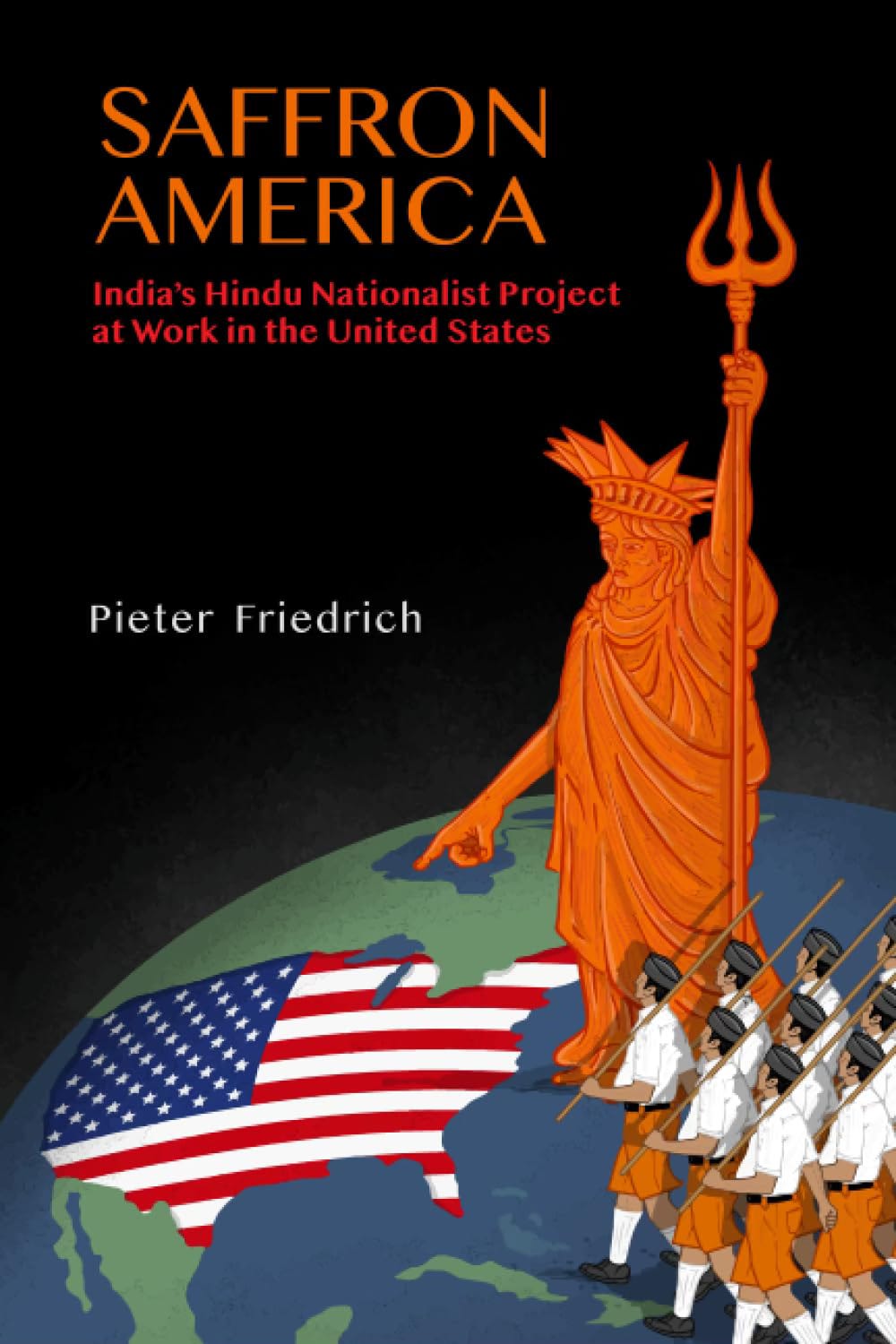Saffron Storm: Tracing Hindutva From Ahmedabad to America
Two explosive books expose Hindutva's transnational influence
BUY TODAY: “Saffron Fascists” | “Saffron America”
Discover the shocking truth about India’s Hindu nationalist movement and its global reach in two groundbreaking books by investigative journalist Pieter Friedrich.
In “Saffron Fascists: India's Hindu Nationalist Rulers,” Friedrich exposes the authoritarian agenda of India’s ruling Bharatiya Janata Party (BJP) and its ideological fountainhead, the Rashtriya Swayamsevak Sangh (RSS). Through meticulous research and compelling narratives, he traces the rise of Hindu nationalism from its roots in the early 20th century to its current domination of Indian politics under Prime Minister Narendra Modi. Friedrich reveals how the RSS-BJP have systematically eroded democratic institutions, suppressed dissent, and fomented violence against religious minorities.
Friedrich’s latest work, “Saffron America: India's Hindu Nationalist Project at Work in the United States,” builds on these themes to expose how the RSS-BJP’s extremist ideology has spread beyond India’s borders. With the same investigative rigor, he uncovers the extensive network of Hindu nationalist organizations operating in the US, including the Hindu Swayamsevak Sangh (HSS), Vishwa Hindu Parishad of America (VHPA), and the Overseas Friends of BJP (OFBJP). Friedrich details how these groups have infiltrated American politics, influenced US-India relations, and worked to whitewash the BJP’s human rights abuses.
These two books complement each other by examining different aspects of the Hindu nationalist movement:
Domestic vs International Focus
“Saffron Fascists” examines the rise and actions of Hindu nationalist groups within India, particularly the RSS and BJP. It traces their ideological roots, rise to power, and impact on Indian politics and society. “Saffron America” shifts the focus to how Hindu nationalist ideology and organizations have spread internationally, specifically looking at their activities and influence in the United States. It explores how groups like the HSS and VHPA operate as extensions of the RSS and VHP in America.
Historical Context vs Current Operations
The first book provides important historical context on the origins and development of Hindu nationalist groups in India over the past century. The second examines the current operations and strategies of Hindu nationalist affiliated groups in the US, showing how they have established a presence and seek to exert influence in American society and politics.
Ideology vs Implementation
“Saffron Fascists” delves into the core ideology of Hindutva and how it has manifested in Indian politics and society under the BJP and Modi. “Saffron America” looks more at the practical ways this ideology is being implemented and promoted in the US context through various organizations, events, and political lobbying efforts.
Domestic Politics vs Diaspora Influence
The first book focuses on how Hindu nationalist groups have impacted domestic Indian politics and governance. The second examines how they are attempting to mobilize the Indian-American diaspora community and influence US policies toward India through American organizations linked to India’s RSS-BJP.
Together, these books trace the movement’s origins in India to its current efforts to expand influence globally, particularly in the United States. They provide a comprehensive picture of Hindu nationalism’s domestic power in India and its growing transnational ambitions and reach. Both books showcase Friedrich’s unparalleled expertise on this critical subject. As an independent journalist focused on South Asian affairs, he has spent years tracking the Hindu nationalist movement’s activities both in India and abroad. His fearless reporting and incisive analysis cut through the propaganda to reveal the true nature and goals of these organizations.
Friedrich’s work is essential reading for anyone seeking to understand one of the most significant threats to democracy and pluralism in the world today. By connecting the dots between Hindu nationalism’s rise in India and its growing influence in America, he sounds an urgent warning about the global dangers of this fascist ideology.
Thought-provoking, meticulously researched, and compellingly written, Friedrich's books are indispensable resources on a topic of critical importance. Whether you're a scholar, policymaker, or concerned citizen, these eye-opening exposés will forever change how you view India’s ruling party and its international agenda.
Key Takeaway From “Saffron America”
Friedrich’s analysis of the RSS-BJP’s international influence reveals several key impacts on our understanding of global politics:
Transnational networks: The book highlights how Hindu nationalist organizations like the RSS and BJP have built extensive networks abroad, particularly in countries with large Indian diasporas like the US. This demonstrates how nationalist movements can leverage diaspora communities to expand their influence globally.
Soft power projection: Friedrich details how groups like the HSS, VHPA, and OFBJP work to shape perceptions of India and promote Hindu nationalist ideology internationally. This shows how non-state actors can engage in public diplomacy and soft power projection alongside governments.
Fundraising and mobilization: The analysis reveals how Hindu nationalist groups raise funds and mobilize supporters abroad to impact domestic Indian politics, such as during election campaigns. This illustrates the growing importance of diaspora communities in shaping political outcomes in their countries of origin.
Ideological export: Friedrich argues that Hindu nationalist ideology is exported and promoted internationally through these networks, suggesting nationalist movements are not confined within borders but can spread transnationally.
Democratic vulnerabilities: The book shows how Hindu nationalist groups leverage democratic freedoms in countries like the US to advance an authoritarian agenda in India. This exposes how liberal democracies are potentially vulnerable to foreign influence operations.
Masking extremism: Friedrich contends that Hindu nationalist groups often present a moderate face internationally while pursuing more extreme agendas domestically. This reveals how transnational actors can exploit gaps in understanding between different contexts.
Long-term strategy: The analysis traces Hindu nationalist outreach efforts over decades, showing how patient, long-term approaches can gradually build influence internationally.
Institutional infiltration: Friedrich details how Hindu nationalist affiliated individuals have gained positions in US institutions, demonstrating how global ideological movements seek to shape American foreign policy.
By exposing these dynamics, Friedrich's work compels us to take a more nuanced view of how nationalist movements operate across borders and impact global politics in the 21st century. It highlights the need to look beyond traditional state-to-state relations to understand the full scope of transnational political influence today.






